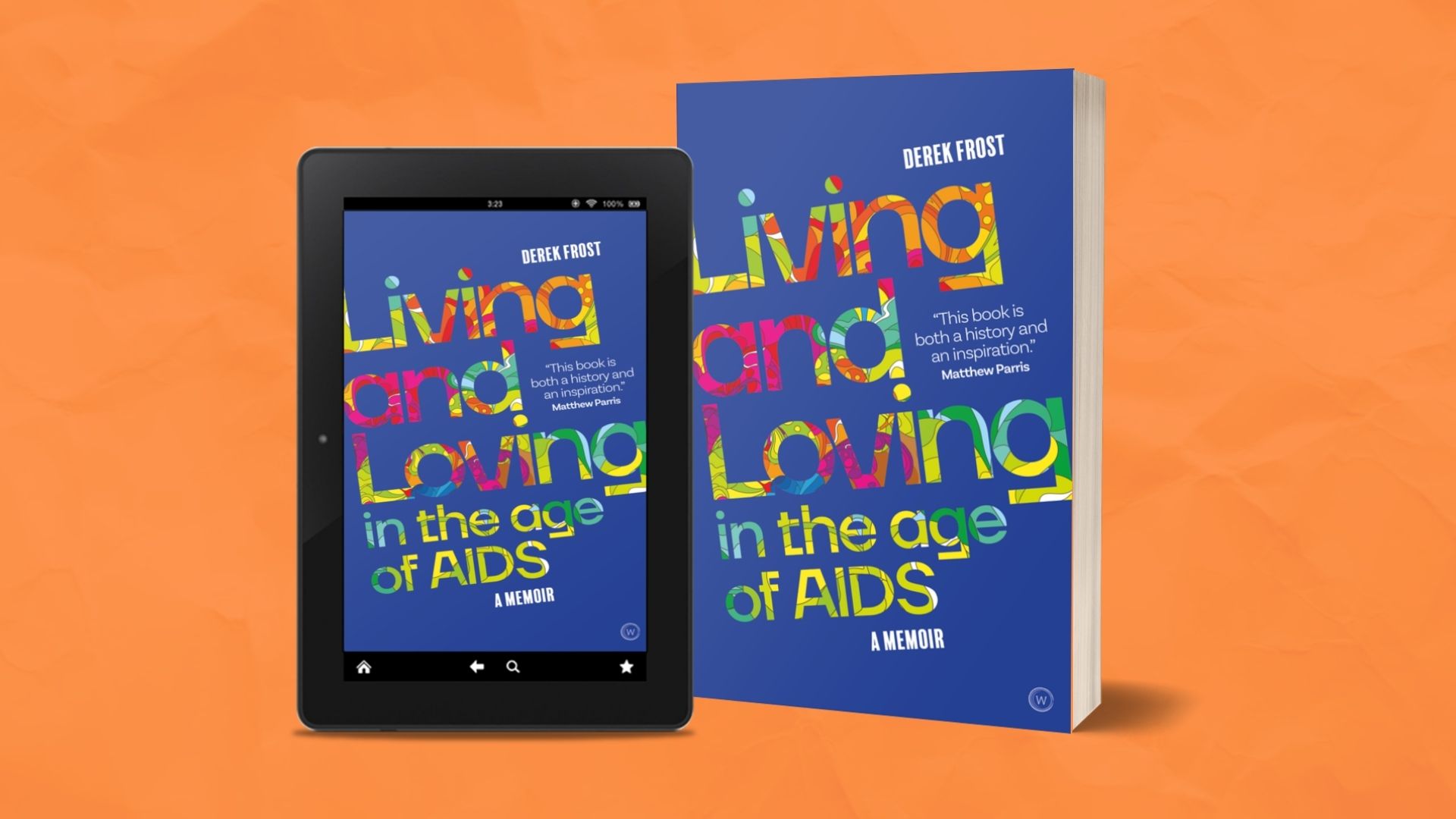Extract: Living and Loving in the Age of AIDS by Derek Frost

In honour of LGBTQ History Month, we are sharing an extract from Living and Loving in the Age of AIDS, the moving memoir from co-creator of London’s iconic Heaven Nightclub, Derek Frost.
Living and Loving in the Age of AIDS is the tale of a devastating pandemic, of lives cut painfully short – it’s also a love story. This extraordinary memoir tells the story of a couple working in the heart of the gay scene in the midst of the AIDS epidemic – battling a positive diagnosis, whilst still keeping their now 40-year-old love affair alive.
The following extract has been taken from a chapter called ‘Key West’ which describes the moment when Derek first hears of the disease.
In Key West, we experience what must be one of the fullest expressions of gay liberation, a freedom from any form of censure. Here we celebrate these victories surrounded by great beauty on this glorious tropical jewel embraced on all sides by turquoise oceans. We begin to believe we are in paradise. And then change, profound change.
It’s here, in our perfect paradise, as elsewhere, that something quite other occurs. Here, where something imperfect arrives, silently, almost imperceptibly; something that is not light but is dark; something that is not joyful but is tragic. Here, in paradise, a hellish demon insidiously invades our lives.
It is here, in Key West, that we first hear rumours about a gay cancer; hear talk of a new disease that appears to be targeting and killing gay men. No one seems to know anything about this disease. We have no understanding of what it is or knowledge of the terrifying impact it will have on our lives. Talk of this cancer starts to slowly invade our happy conversations, in clubs, on beaches, around pools and dinner tables. It begins as a murmur, barely heard. Soon its ugly voice will become louder, much louder.
In July 1981, the New York Times publishes one of the first articles about the illness, under the headline: “Rare Cancer Seen in 41 Homosexuals”. The disease is identified as a viral infection that attacks the immune system, and acquires the name Gay Related Immune Deficiency (GRID). Colloquially, it’s known as the “Gay Cancer” or the “Gay Plague”.
Then the name that remains: Acquired Immune Deficiency Syndrome – AIDS. Its cause, the Human Immunodeficiency Virus (HIV), will not be identified until 1983.
More information emerges slowly. A person infected by the HIV virus is described as HIV Positive or simply Positive. HIV attacks the immune system. When a Positive person’s immune defence is sufficiently destroyed, disease can enter unhindered causing Opportunistic Infections. When serious Opportunistic Infections present, a Positive person is deemed to have developed AIDS. At this time there is no cure, no treatment and no medical consensus about how best to counter this attack.
Established retrospectively, the first recorded AIDS death in the United States was Robert R, a fifteen-year-old boy who died in May 1969. Despite his young age, evidence showed that he was already sexually active. His cause of death was not understood then. His doctor, Memory Elvin-Lewis, saved specimens from his body. In 1987, analysis of these specimens caused scientists to state: “We’re 99.9 percent sure that this boy had AIDS.” The inevitable question arises: If AIDS was already present in the US as early as the 1960s, were others infected?
“The virus didn’t come from nowhere,” explained Professor Elvin-Lewis. “Robert R was infected by someone. Most probably he infected others, but the disease didn’t take hold. A virus only grows in virulence when it is passed back and forth frequently in a limited population. That condition was met when gay promiscuity gave the virus the amplification it needed to thrive. The birth of this epidemic required the excesses of a sexual revolution.”
Her use of words then, in 1987, was unfortunate.
Promiscuity and excess are freighted with condemnatory meaning. It was the virus that caused AIDS – not homosexuality. But a sexual revolution? Certainly. The arrival of the birth control pill and the advent of the free love movement had, for straight people in the 1960s, caused a sexual revolution. We gays had to wait until the late 1970s and early 1980s, post the period of initial activism and the subsequent liberation and empowerment that followed, before embarking on our own sexual revolution. We had reason to celebrate and we partied hard. Pride Marches became bigger and bolder as more and more gay men, together with other queers, found the courage to come out. Sex played a major role in this celebration.
It is profoundly sad to reflect that our celebration may unwittingly have speeded the exchange of the virus and thereby strengthened its potency; that our fight for acceptance and subsequent celebration provided, in Western countries, the amplification that Professor Elvin-Lewis describes. This occurrence is a true classical tragedy, a tragedy which cannot be associated with blame. It’s a tragedy whose agony is heightened by following so quickly in the footsteps of our long-overdue liberation.
Derek Frost, born 1952, met and fell in love with Jeremy Norman in 1977. He’s a skilled designer, photographer, artist, yoga practitioner and gardener. Together with Jeremy he started numerous businesses including iconic Heaven nightclub and Soho Gyms. They live a nomadic life on both land and water. Derek has other loves – for stones, clouds, dance and street art. One of the two charities they started, Aids Ark, has to date saved over 1,000 lives.
Living and Loving in the Age of AIDS is available to pre-order here in multiple formats.


